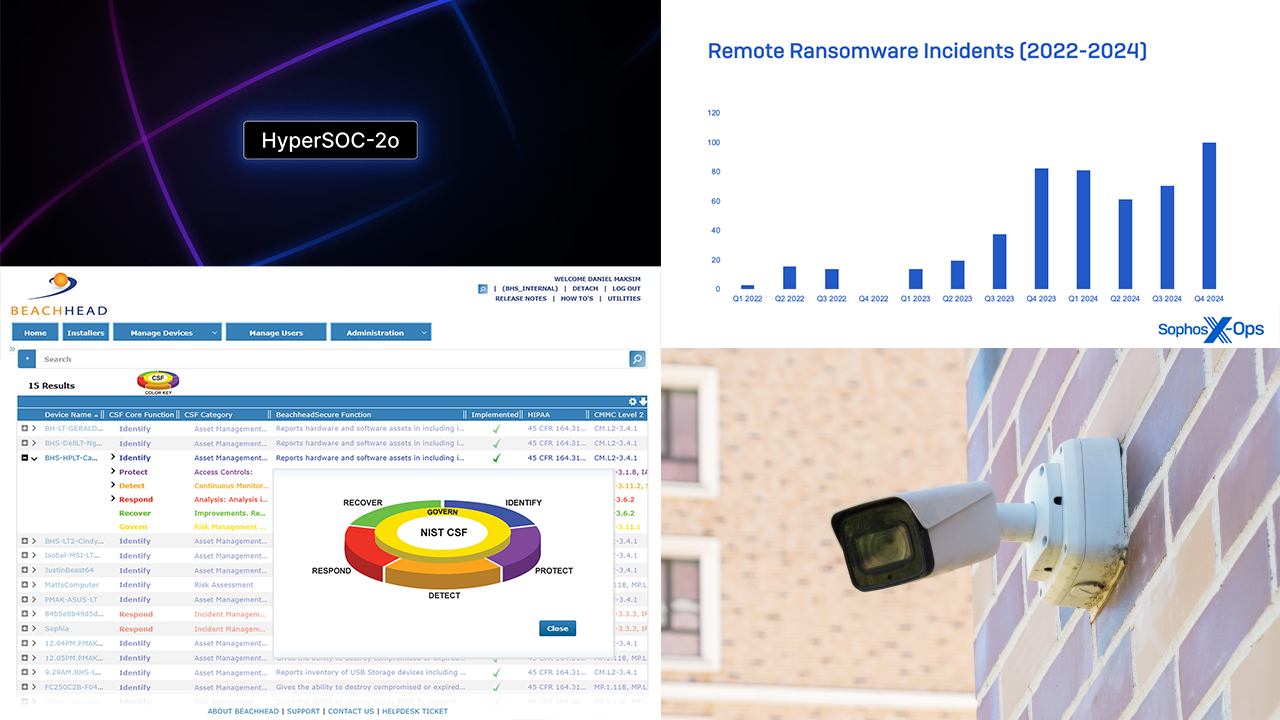WHEN YOU HOLD a quarterly business review and all the client wants to talk about is a ticket that’s been open for two weeks, that’s a real encumbrance to growing your business,”” says Todd Kane, president of Evolved Management Consulting, which focuses on IT services businesses. If service delivery is not meeting customer expectations, he stresses, they will have no interest in investing in new solutions. That’s why a good service manager is “”fundamental for being able to grow and scale your business.””
The benefits a service manager brings include increased profitability and a more consistent experience for both clients and employees, according to Josh Peterson, CEO of Bering McKinley, an IT services management consulting firm. It also allows owners “”to take the next step in their ownership journey,”” he says, by building an infrastructure that isn’t centered around them.
Most channel pros initially are everything—salesperson, technician, service manager, and more. When staffing hits eight to 10 employees, it starts making sense to have a service manager, Kane says.
Barb Paluszkiewicz, CEO of CDN Technologies in Oakville, Ontario, hired a service manager, who was employee No. 4, “”as soon as it was financially possible.”” She and her staff were wearing too many hats, she explains. “”Some of these hats were very time consuming and they weren’t necessarily our forte, so what we wanted was for everybody to work on what it was that they were good at and to have someone have the client-facing responsibilities.””
For Jason Etheridge, president of Logic Speak, an MSP in Roswell, Ga., the tipping point was recognizing that a haphazard approach to service delivery was holding back growth. “”We felt like we were starting to implode on ourselves because we weren’t able to take as many tickets as we should have. We took the tickets that clients called about, the ‘squeaky wheel’ syndrome,”” he recalls.
Logic Speak had reached just under $1 million in revenue and 7 employees. Etheridge turned to consultant and business coach Manuel Palachuk to help him implement an agile service delivery method, which included creating service manager and dispatcher roles. “”You’ve got to have the service manager who’s orchestrating or making sure that everything is going well, and then you’ve got to have somebody who’s doing the nitty-gritty scheduling,”” Etheridge says.
Roles and Responsibilities
How IT business owners define the roles of service manager and dispatcher varies. At CDN, the service manager works closely with clients to make sure they are happy. They also work with the techs to provide clients updates on projects, Paluszkiewicz explains.
At Logic Speak, the service manager oversees the tech support organization while a different manager oversees projects.
Peterson acknowledges that “”the real challenge with our industry is there are not globally recognized definitions,”” but Bering McKinley has carved out some. Dispatchers, he explains, own every ticket that flows in and out of the company, with a responsibility of keeping them moving forward through completion. They are also responsible for the technicians’ day and the inventory of hours, and report to the service manager if there is one.
A service manager, Peterson says, has three primary objectives: a gross profit of 55% or higher, a happy workforce, and a high client satisfaction rating. The service manager is responsible for knowing where the company is regarding those objectives at any given time, he says, and should be looking ahead. “”What do we need next? Do we need greater documentation of our client networks? Do we need better documentation of how we handle these technical tasks? Do we need better documentation of how we do our workflow through the organization?””
A business’s first service manager is often tasked with building out those things for the first time, Peterson says.
Making the Right Hire
Appointing a service manager with the required skills and personality traits suited to the job is critical. Many channel pros take their top or most senior technician and promote them to service manager, but Kane says this is the wrong approach. For one, he says, “”You don’t want to take your best tech and remove them from producing the value that they’re producing as a technician.”” Second, he adds, the best service managers are stronger in administration than technical skills.
If you do promote a technician, they should be a model technician, Kane notes, meaning they are good with entering their time, they contribute to and use documentation, and are personable. “”The person that you want leading the team is more than comfortable to sit in a meeting with the individual staff.””
It’s a big-picture role, stresses Peterson. “”They must be very supportive of others’ success. They really like to see their clients do neat things with technology and they like to see their team evolve and work their way up the technical ranks.””
They must also have a deep desire to understand the financials, he adds. “”We often say if you have a service manager who’s never seen the P&L, you don’t have a service manager, you have a supervisor and that’s OK. But let’s not call them a manager.””
Paluszkiewicz says service managers must have a positive attitude, be solutions oriented, and have good listening skills plus the ability to guide conversations in a positive direction.
Etheridge says the job requires someone who can be “”a good butt-kicker”” when needed but also has the relationship skills to “”see the best in people and to help them accomplish their best.””
Too much emphasis on the butt-kicking rather than mentoring can demoralize your team and is the mark of a bad service manager, adds Etheridge, a lesson he learned with his first service manager hire.
A bad service manager can also harm customer relationships by arguing or getting easily irritated, says Paluszkiewicz, who fortunately has not had that experience. “”They need to have a relaxed demeanor because in the role, and where IT is at these days, it changes daily,”” she says. “”So, you have to be able to roll with it.””
Putting the wrong person in the service manager’s role will also force the owner to be drawn back into tactical activities, says Kane. “”In a way, having a bad service manager is worse than having no service manager at all because you’ve promoted someone, you’ve potentially given them a pay raise, and you’re still doing the work that you intended them to do in the first place.””
If you do make the wrong hire, reexamine your job description and expectations. “”A bad service manager is usually a reflection of a poorly defined service management role,”” says Peterson.
Tools and Techniques for Success
The best service managers, according to Peterson, are adept at using the accounting package, understand what drives the financials, and are masters of the PSA tool. “”They have the know-how to configure their PSA in a way that not only gets the job done, but also allows them good reporting so they can analyze what happened,”” he says. “”And they have to have that curiosity to always be asking why.””
Kane cautions against drowning in too much data and prefers “”management by exception.”” While PSAs and RMMs have some reporting capability, he advises utilizing a business intelligence tool like BrightGauge or Cognition360 to pull in key performance indicators from various data sources with a dashboard for alerts. “”There’s too much data for you to be able to practically keep track of what’s going on, so you need some way to be able to be alerted, or at least monitor and be able to step in if things are off track right,”” he says.
Etheridge agrees. “”If you’re not careful, and we found ourselves to be victims of this at times, you’ll look at all the information and not focus on the things that are most important.”” Logic Speak uses BrightGauge and dashboard alerts to spot potential problems with KPIs, which include customer satisfaction and total ticket backlog. “”There is an inverse relationship between our backlog going up and our customer satisfaction going down,”” he says.
What his service manager doesn’t track as a KPI, he adds, is the number of open tickets. “”We still look at it, but we try not to track how many tickets are open because that creates this sense of, we’re never catching up. Because as you know, tickets are never going to go to zero.”” Tracking open tickets creates “”a rat race feeling”” that creates a hurry-up mentality that is counterproductive to doing a good job, he says.
No matter what tools or KPIs you focus on, Kane notes, they “”won’t solve your people problems.”” Instead, he stresses, spending time with the team and gaining their loyalty and respect is critical. “”One of the highest value activities that any manager, including the service manager, does is one-on-ones with the staff every week.””
Mistakes to Avoid
While being supportive of the team is critical, too much empathy can trip up a service manager new to the role, says Peterson. For instance, if the service manager was a technician, there may be certain tasks he or she disliked doing and decides, “”So now that I’m service manager, I’m not going to force people to do it,”” he explains.
Service managers also need to remember that they’re no longer an individual contributor. “”Your success as a service manager is determined by the success of your team,”” says Kane, “”and that’s not something that is inherently understood for a lot of people in this role.””
Etheridge advises service managers not to get so focused on the process that they lose sight of the people. “”We really believe both in people and process, but … if you lean all the way into the people, you’ll never follow a process. And if you lean all the way into the process, your people will quit because you’re just browbeating them into following this process.””
IT owners play a role in helping their service managers avoid missteps too, which should start with training but is often overlooked, Kane notes. “”The owner says, ‘you’re a smart guy or gal, I think you’ll be great at this, let me know if you need anything.'”” Service managers who are not comfortable with what they’re supposed to be doing often default back to the technical work, he notes.
Etheridge wisely points out that giving up the day-to-day hands-on is a challenge for both the owner and the service manager. “”The hardest thing in management is to have to get something done, never touching it, because you’re getting that done through other people. Figuring out that balance of how to empower or motivate people to accomplish something amazing without actually ever putting your hands on it is probably one of the biggest skills that we all probably work on our whole lives.””
Sums up Peterson, “”Our biggest challenge is helping a new service manager and owner with a new service manager understand the value that this person can bring is so much greater than their ability to take a couple of tough tickets when we get too busy.”” Their real value is “”understanding what’s happening in the entire department.””

















